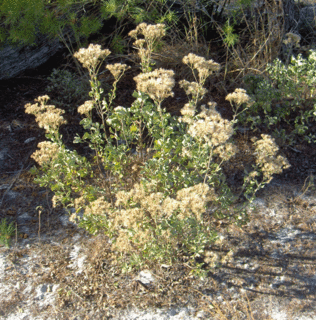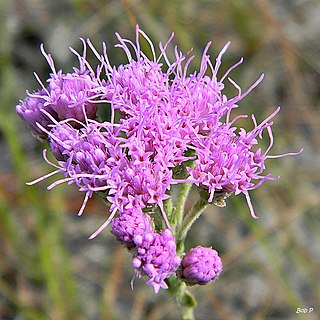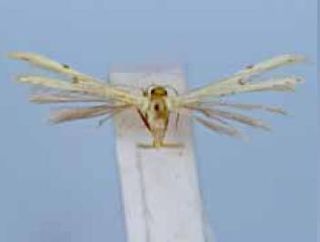Related Research Articles

Asimina is a genus of small trees or shrubs described as a genus in 1763.

Hoya is a genus of 200–300 species of tropical plants in the dogbane family, Apocynaceae. Most are native to several countries of Asia such as Philippines, India, Thailand, Malaysia, Vietnam, Bangladesh, Indonesia, Polynesia, New Guinea, and vast variety of species could also be found in Australia.

Helianthus is a genus comprising about 70 species of annual and perennial flowering plants in the daisy family Asteraceae. Except for three South American species, the species of Helianthus are native to North America and Central America. The common names "sunflower" and "common sunflower" typically refer to the popular annual species Helianthus annuus, whose round flower heads in combination with the ligules look like the sun. This and other species, notably Jerusalem artichoke, are cultivated in temperate regions and some tropical regions as food crops for humans, cattle, and poultry, and as ornamental plants. The species H. annuus typically grows during the summer and into early fall, with the peak growth season being mid-summer.

Anthurium, is a genus of about 1000 species of flowering plants, the largest genus of the arum family, Araceae. General common names include anthurium, tailflower, flamingo flower, and laceleaf.

Lycopodiella is a genus in the clubmoss family Lycopodiaceae. The genus members are commonly called bog clubmosses, describing their wetland habitat. The genus has a cosmopolitan distribution, with centers of diversity in the tropical New World and New Guinea. In the past, the genus was often incorporated within the related genus Lycopodium, but was segregated in 1964. In the Pteridophyte Phylogeny Group classification of 2016, Lycopodiella is placed in the subfamily Lycopodielloideae, along with three other genera. In this circumscription, the genus has about 15 species. Other sources use a wider circumscription, in which the genus is equivalent to the subfamily of PPG I, in which case about 40 species and hybrids are accepted.

Liatris is a genus of flowering plants in the boneset tribe within the sunflower family native to North America. Its most common name is blazing star. Some species are used as ornamental plants, sometimes in flower bouquets.

Hoya carnosa, the porcelainflower or wax plant, is an asclepiad species of flowering plant in the dogbane family Apocynaceae. It is one of the many species of Hoya that are native to Eastern Asia and Australia. It is a common house plant grown for its attractive waxy foliage, and sweetly scented flowers. It is grown well in pots and hanging baskets.

Machaeranthera is a genus of North American flowering plants in the daisy family which are known by the common name tansyaster.

Garberia is a monotypic genus of flowering plants in the aster family, Asteraceae, containing the single species Garberia heterophylla. It is endemic to Florida in the United States, where it is distributed in the northern and central counties. The plant is known commonly as garberia and Garber's scrub starts.

Carphephorus is a genus of North American plants in the sunflower family. They are native to the southeastern United States from Louisiana to Virginia. Plants of this genus are known commonly as chaffheads.
Hartwrightia is a genus of North American flowering plants in the tribe Eupatorieae of the sunflower family. The genus contains a single species, Hartwrightia floridana, native to the US states of Georgia and Florida. The species is sometimes referred to by the common name Florida hartwrightia.

Psectraglaea is a monotypic moth genus of the family Noctuidae described by George Hampson in 1906. Its only species, Psectraglaea carnosa, the pink sallow, described by Augustus Radcliffe Grote in 1877, is native to North America. It is listed as threatened in Connecticut, and as a species of special concern in Massachusetts.
Trilisa is a genus of flowering plants in the boneset tribe within the daisy family.

Didelta is a genus of shrubs of up to 1 or 2 meter high, with two known species in the daisy family. Like in almost all Asteraceae, the individual flowers are 5-merous, small and clustered in typical heads, and are surrounded by an involucre, consisting of in this case two whorls of bracts, which are almost free from each other. The 3–5 outer bracts are protruding and triangular in shape, the inner about twice as many are lance-shaped and ascending. In Didelta, the centre of the head is taken by 3–5 clusters of bisexual yolk yellow disc florets, sometimes divided from each other by male disc florets, and is surrounded by one complete whorl of infertile yolk yellow ray florets. The common base of the flowerhead swells around the developing fruitlets, become woody and breaks into segments when ripe. The fruitlets germinate within this woody encasing. The species of the genus Didelta can be found in Namibia and South Africa. The genus is called salad thistle in English and slaaibos in Afrikaans.

Adaina bipunctatus is a moth of the family Pterophoridae. It is found in the United States, including Florida and Mississippi. It has also been recorded from Trinidad, the West Indies, Brazil and Ecuador.

Adaina simplicius is a moth of the family Pterophoridae. It is found in the United States, Brazil, Costa Rica, Ecuador, Paraguay and Puerto Rico. It was introduced to South Africa for study as a biological control agent for Eupatorium macrocephalum.

Didelta spinosa (L.f.) Aiton, belonging to the family of Asteraceae, is a Southern African woody shrub or small tree endemic to the West Coast and found from Saldanha Bay in the south across the Gariep into the south-west corner of Namibia. Growing 2–3 m tall and drought-resistant, its preferred habitat is on dry, rocky slopes. This species was introduced to Europe by Thunberg and Masson.
Carphephorus tomentosus is a species of North American plants in the sunflower family. They are native to the southeastern United States in the states of Virginia, Georgia, North Carolina, and South Carolina.
Carphephorus bellidifolius is a species of North American plants in the sunflower family. They are native to the southeastern United States in the States of Virginia, Georgia, North Carolina, and South Carolina.
Carphephorus paniculatus, commonly known as the hairy chaffhead, is a species of flowering plant native to parts of the southeastern United States. A perennial dicot, it reaches a height of 3 feet.
References
- 1 2 3 Flann, C (ed) 2009+ Global Compositae Checklist Archived 2014-12-17 at Archive.today
- ↑ The Plant List Litrisa carnosa Small
- ↑ Small, John Kunkel. 1924. Bulletin of the Torrey Botanical Club 51(9): 392 entirely in English
- ↑ Tropicos, Litrisa Small
- 1 2 Flora of North America Vol. 21 Page 535 Carphephorus Cassini, Bull. Sci. Soc. Philom. Paris. 1816: 198. 1816.
- ↑ Biota of North America Program 2013 county distribution map, Carphephorus carnosus
- ↑ Atlas of Florida Vascular Plants